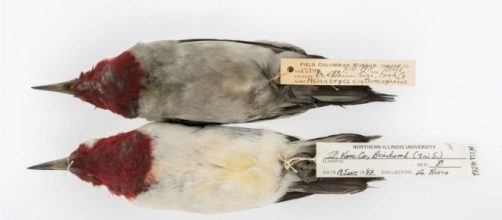Burning Coal for energy or heating a home has been the staple of developed countries since the two industrial revolutions. However, measuring the amount of coal and fossil fuels being used to provide energy and heat has been hard to determine. Thanks to the preservation of some songbirds, scientists in the United States now have a definite record of how much fossil fuels have been used for a century.
Blackened songbirds
When coal is burnt, it lets off heat and energy, but some by-products of coal include soot, a type of black carbon powder.
There are many collections of songbirds and animals in many natural history museums around the United States.
But during the heart of the 19th Century in the US, industrial cities like Chicago, Detroit, and Pittsburgh were the powerhouses of US manufacturing.
In the collection of nearly 1,300 woodpeckers, larks, and sparrows show a drastic change in how we look at these birds today. Birds from the 1900s were found to be covered thoroughly in soot. Compared to their later counterparts who have kept their original coloring, it reveals a great deal of usage for coal back in the industrial boom of the period.
Fossil fuel regulation
Back in the time period of the beginning of the century, coal burning was unregulated. There were many health hazards surrounding the burning of coal. When the coal burns, it's soot is released in the atmosphere and traps in the heat, so record high temperatures would be very common in highly industrial cities.
Not to mention black lung and respiratory infections would be very common to suffer near any industrial city.
By measuring the soot in the songbird's feathers, scientists in the US were able to see the levels of coal being burned and how much soot would have been released in the air. It turns out that the amount of air quality in the 1900's contained high amounts of carbon.
The Great Depression saw a decrease in coal use, and the second World War saw an increase in using coal for manufacturing and making weapons for fighting Germany, Japan, and Italy.
Now that there is natural gas and electricity to be used for heat and energy, the use of coal is smaller compared to the beginning of the 1900's.
We also have better methods for regulating the use of coal and fossil fuels so that we can burn cleaner.
UK soot
When scientists have completed their analysis of coal use in the US for 100 Years, they hope to compare it to the coal use in Britain, who have a much richer history of using fossil fuels for heat and energy. By using information from songbirds in the US and the UK, scientist hope to see a more defined use of coal and fossil fuels and what it meant to live within those 100 years of coal.


